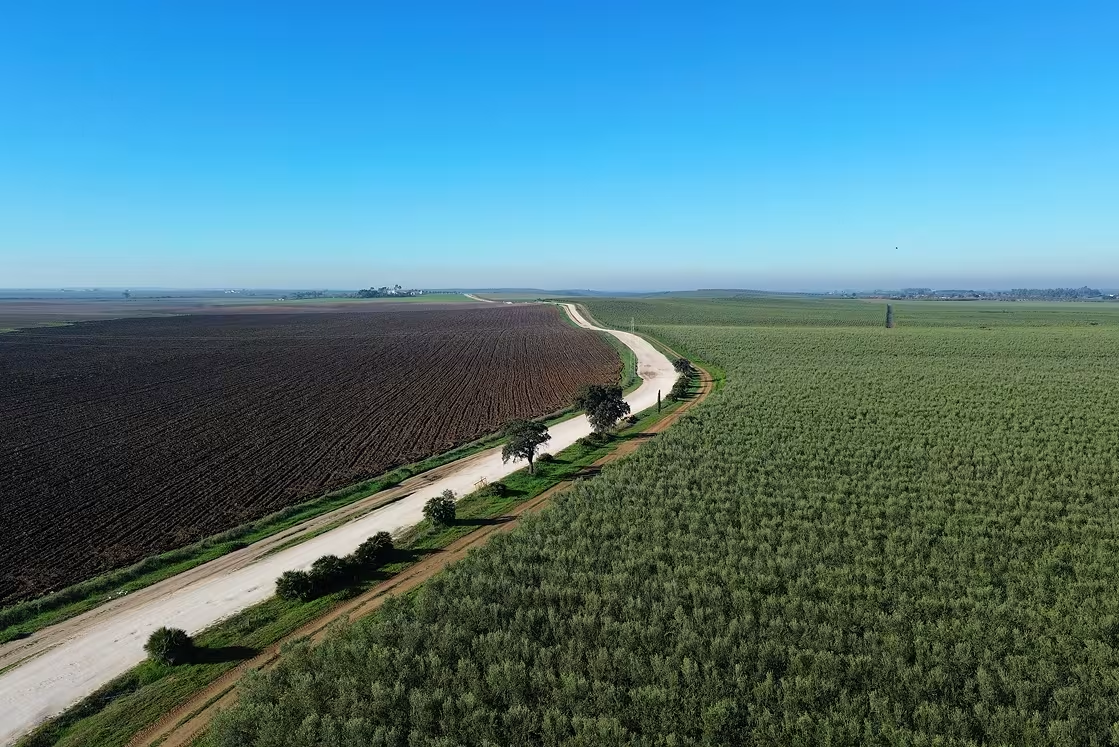Lack of coordination between regional warehouses

Causes unnecessary transfers and additional logistics costs.
Multi-warehouse inventory synchronization and centralized replenishment planning.

150+ companies trust us

































Oil distribution must balance delivery times, logistics costs and inventory control in an increasingly volatile environment. Fluctuations in demand, price variations, and channel complexity force distributors to plan with real-time data. Integrating AI and predictive planning allows us to anticipate consumption and maintain an agile and profitable service.
Sales, inventory and order data are managed in isolated systems, which prevents having a consolidated view of the network.
Stock incidents are detected late, when the order is already in progress or the customer has suffered a delay.
Companies with multiple distribution points lose visibility on internal movements or inventory differences.
Predictive planning centralizes all inventory and sales information on a single platform, offering complete, real-time visibility into product availability and rotation.
AI algorithms identify consumption patterns and anticipate demand peaks, alerting of possible breakdowns with sufficient advance notice to replenish without emergencies.
The synchronization of inventories between warehouses allows knowing the global stock available, detecting imbalances and automatically redistributing it according to the needs of each point.

The fear of breakage leads to buying more than necessary, generating extra storage costs and immobilized capital.
References with low output take up space and deteriorate inventory profitability.
Reducing stock without affecting the level of service is complex without a predictive vision.
Predictive planning models adjust security coverage based on the volatility and history of each reference, avoiding unnecessary overprovisioning.
ABC-XYZ segmentation identifies slow-moving products and proposes differentiated strategies: stock reduction, promotions or redistribution.
The AI analyzes demand by point of sale and recommends dynamic replenishments, maintaining availability with minimal tied up capital.

Purchasing, logistics and demand work with different objectives, generating mismatches between forecasts, orders and deliveries.
Breakages or delays cause off-route transport, increasing costs and reducing efficiency.
The lack of integrated information makes it difficult to predict when and how the merchandise will arrive.
The integration between demand, purchasing and transportation modules synchronizes the planning of the entire network, aligning priorities and reducing operational frictions.
Predictive planning groups orders according to routes and capacities, optimizing truck loading and minimizing urgent shipments.
The system combines lead time data with demand forecasts to anticipate bottlenecks and automatically reschedule deliveries without affecting service.

Incomplete or late deliveries penalize customer confidence and make the operation more expensive.
Inaccurate forecasts lead to unstable plans that affect service and inventory.
Without a clear strategy, all references are managed the same, diluting the operational focus.
Advanced planning optimizes order sequencing and adjusts transportation plans to ensure complete and on-time deliveries.
Predictive forecasting models recalculate demand with updated data, correcting deviations and improving the reliability of the plan week by week.
Predictive planning allows you to identify strategic products by impact on sales or service, allocating resources and stock proportionally to their relevance.


Causes unnecessary transfers and additional logistics costs.
Multi-warehouse inventory synchronization and centralized replenishment planning.

Actual demand is affected by weather, promotions or seasonality.
AI-based forecasting models that incorporate external variables and real sales signals.

Increases complexity without providing profitability.
Predictive analysis of profitability and rotation, to adjust the assortment to the potential of each customer or channel.
Key indicators that offer a clear vision of the strategic weight that this industry has in the current and future global economy.

Data obtained from Statista*
Connect demand, procurement, and production through a modular cloud platform, designed to adapt to the unique needs of every industry.
Integration with all ERPs


100% Cloud, ISO 27001 Certification

Customer reviews
Measurable results
Ecosystem tailored to your needs


Quick implementation
Start with our demand module, the tool that allows you to calculate how much you will sell.
Add the features that suit your business. Scale at your own pace and expand when you need to, with our plugins.
Once you've added the features you need, get your price with our calculator. And if you have any questions, we'll sort them out for you.

"The demand forecast is very accurate and, when there are deviations, the tool makes it easy to know in which references it occurs to analyze why." José Delgado, Supply Chain Manager of Agolives
Implementing the software with Imperia is a quick and straightforward process, starting with the integration of the demand module, and can be complemented with 2 new phases. Incorporating the purchasing module and the production module.
A process with full support from our team, with personalised training and consultancy.
Decrease frozen inventory without loss of service.
Increase the number of complete and on-time deliveries.
Cost reduction in urgent transportation and forwarding.
Fine-tune your product classification based on what matters most to your business.
Increases efficiency by minimizing downtime and optimizing transitions between production steps.
Fine-tune daily demand distribution with heuristics tailored to real monthly behaviour.
Activate the BIAS indicator to detect overestimations or underestimations of actual demand values.
Optimize forecasting at more aggregated levels by grouping sales historical data taking advantage of a larger dataset.
Provides the ability to visualize the commercial budget within the tool for analyzing fulfillment at different granular levels.
Optimize your overseas purchase orders by arranging them in containers based on dimensions and weight restrictions, maximizing efficiency for your orders to international vendors.
Add more flexibility to your planning by expanding the grouping hierarchy to seven levels for deeper and more relevant analysis.
Customize your S&OP cycle by creating and editing tasks and meetings that fit your operations.
Activate the DFA indicator to detect to detect forecast deviations, indicating the level of accuracy in predicting actual demand.
Report that allows identifying references within the portfolio that continue to have sales despite being discontinued.
Expand the available product attributes selection to a maximum of 20.
Lengthen the planning horizon to analyze your demand beyond 12 months.
Display your yearly budget in the system and monitor performance across different analysis levels.
Enables the user to specify a total sales figure for a given time frame and automatically distributes it.
Assign forecast modifications to predefined concepts for effective tracking of events that impact demand.
Integration service that facilitates the connection from the customer's system to SCP through a user-friendly interface.
Automatically plan the company's production, defining which products to manufacture, in what quantity, and when, to ensure deliveries are made within the established deadlines.
Manage material requirements to meet the forecasted demand, calculating the necessary coverage to avoid excess stock and shortages. Based on this, automatically generate a purchase order plan, taking into account lead times and supplier order constraints.
The plugin ensures that your procurement planning meets the minimum order requirements set by your suppliers, whether by quantity or value.
Assign multiple suppliers to a material, and SCP will select the most appropriate one based on its procurement criteria.
Manage inventory levels across multiple supply chain stages and monitor transfers and orders to ensure optimal availability and reduced costs throughout the network.
Load pending orders to visualize them alongside your demand forecast and use them to plan procurement and production accordingly.
Configure the demand distribution for new product launches, with the ability to replicate the launch of another product or market entry.
Optimizes inventory management by considering expiration dates, adjusting purchases, and simulating stock flow based on product lifespan.
Factor in the sales history of discontinued items to improve demand forecasts for the products that replace or cannibalize them.
Sequence production orders by considering line availability, performance as well as setup and changeover times to optimize the production plan and meet deadlines. Detect bottlenecks and adapt the plan to changing needs in a convenient Gantt chart.
Enhance your planning by accounting for raw materials that yield multiple products, semi-finished goods, or bulk outputs.
Specify non-working days or days without sales dispatch to exclude them from the demand forecast.
Manage sales contracts by monitoring their monthly fulfillment to adjust planning accordingly.
Weighted deviation report based on the sales volume of each product with respect to the total portfolio.
Define accurate selling prices for demand forecasting. You can configure them at different levels of detail for specific date ranges.
Automatically detect outliers in the historical sales of a product that may have been caused by promotions and suggest the impact of future events indicated by the user.
Calculate demand forecasts by considering both sell-in to distributors or retailers and their sell-out to final customers. You can configure distributors' procurement parameters, including coverage, frequency, lead time, refill quantity, and even sales growth percentages.
Estimate the first availability date for the products belonging to each customer order.
Enables daily tracking of stock levels and facilitates analysis through alerts and detailed reports.
Monitor supplier contracts, providing alerts and key performance indicators.
Measure supplier performance and delivery reliability with a clear, configurable OTIF metric.
Specify non-working days of each supplier to take them into consideration in the procurement plan.
Enables the unit of measure conversion for each product to facilitate a cross-functional assessment of quantities.
Refine the short-term forecast by focusing on the most recent weeks and limiting further impact within a determined horizon.
Enhance the analysis of demand forecast results and facilitate decision-making with strategic indicators such as YTD (Year-to-Date), YTG (Year-to-Go), and year-over-year comparison metrics.
Total Price:
€850,00

Schedule a meeting with our Supply Chain experts and discover the features that will make your supply chain a complete success.
Data controller: Imperia SCM Consulting, Ltd.
Purpose of processing: Manage your demo request and share information about our services.
Legitimacy: Consent granted by submitting the request form.
Recipients: There is no provision for communication to third parties, unless legally required.
Rights: Access, rectify and delete your data, as well as other rights explained in the Privacy Policy.































